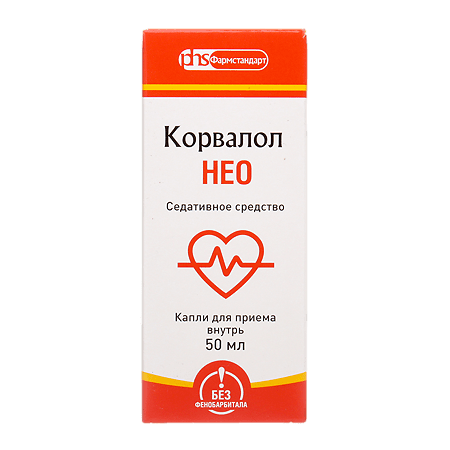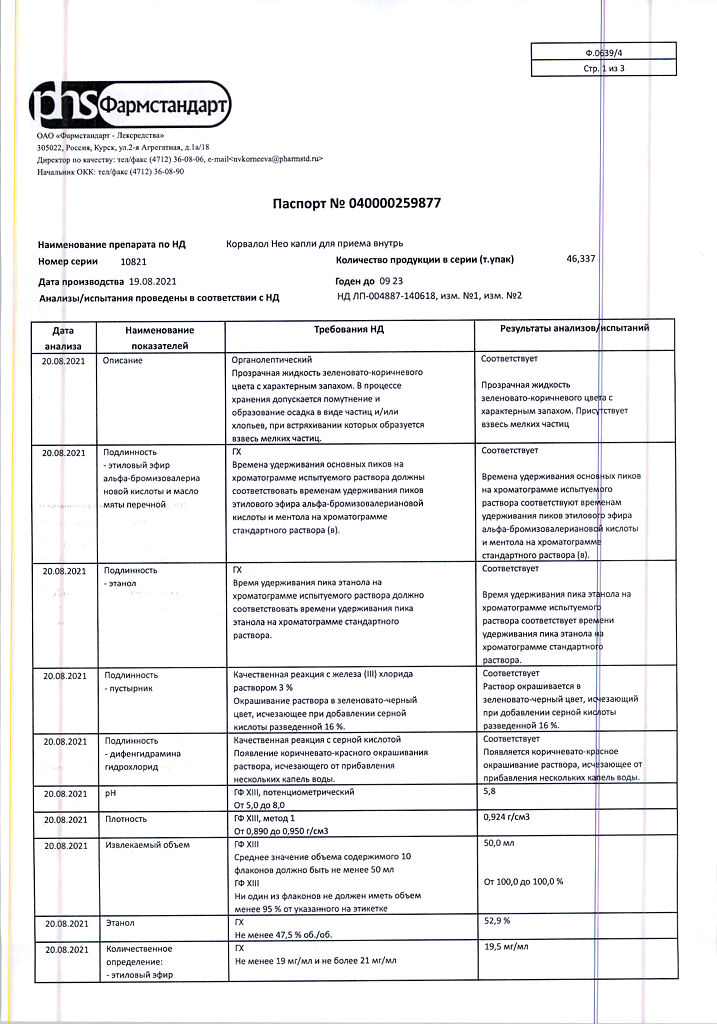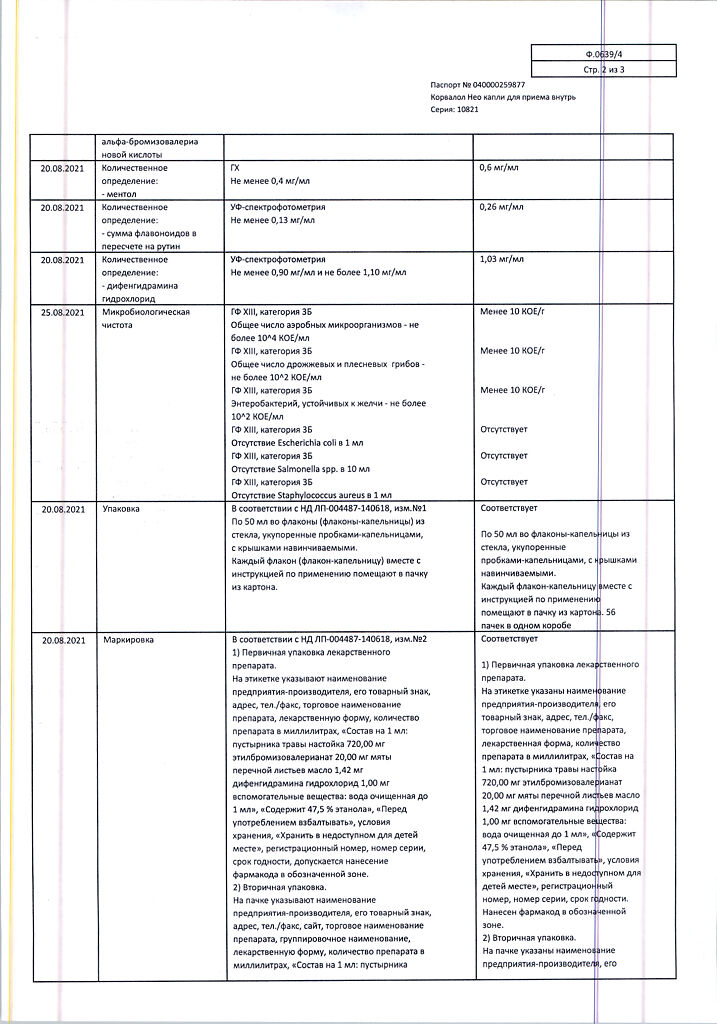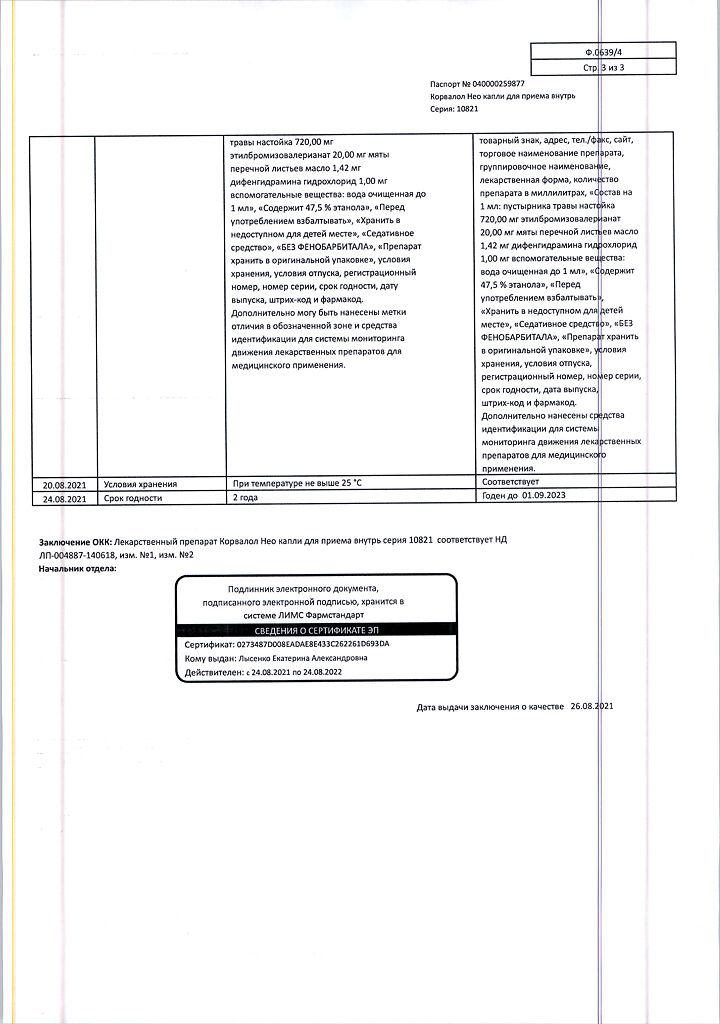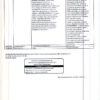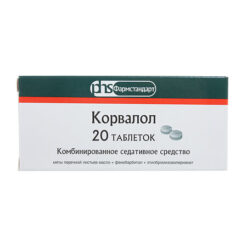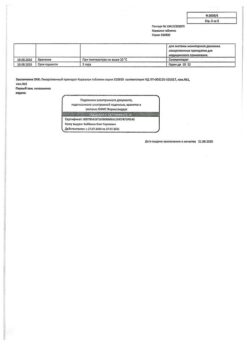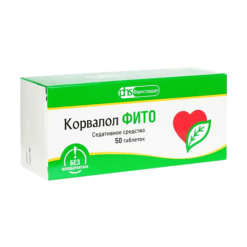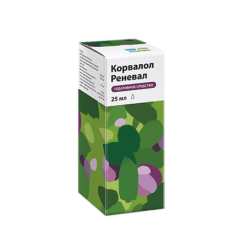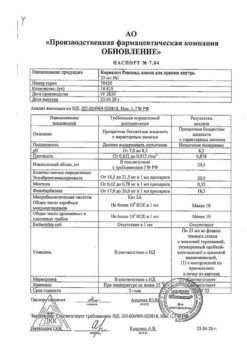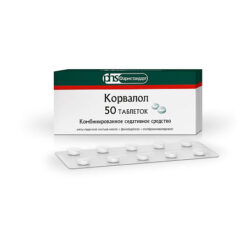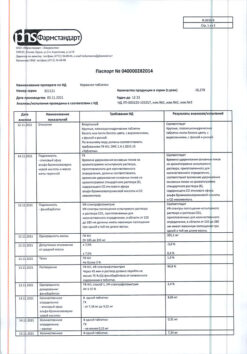No products in the cart.
Corvalol Neo, drops 50 ml
€6.32 €5.61
Out of stock
(E-mail when Stock is available)
EAN: 4601669008640
SKU: 316529
Categories: Medicine, Neurology and Psychiatry, Sedatives and hypnotics
Description
Sedative.
A combined preparation, the action of which is caused by the properties of its constituent substances. It has sedative and antispasmodic effects, moderate cardiotonic effect (slows the rhythm and increases the force of heart contractions), has moderate hypotensive properties.
Ethylbromisovalerianat has sedative and antispasmodic effect caused by irritation, mainly of receptors in the oral cavity and nasopharynx, reduction of reflex excitability in central nervous system and increased inhibition in cortical and subcortical structures of the brain, as well as decreased activity of central vasomotor centers and direct local spasmolytic effect on smooth muscles. By the nature of its action is similar to valerian drugs.
The herb motherwort has a marked sedative effect (sedative), moderately reduces the frequency and increases the force of heart contractions, shows moderate hypotensive properties.
Pearmint oil has reflex vasodilatory, antispasmodic, mild choleretic, antiseptic action. The mechanism of action is related to the ability to irritate the “cold” receptors of the oral mucosa and reflexively dilate mainly vessels of the heart and brain. It eliminates the phenomena of flatulence by irritating the mucosal receptors of the gastrointestinal tract (GIT), increasing intestinal peristalsis.
Diphenhydramine is a first generation blocker of H1-histamine receptors. Its action on the central system is due to blockade of H1-histamine receptors of m-cholinoreceptors in the brain. It reduces or prevents histamine-induced smooth muscle spasms, increased capillary permeability, tissue edema, itching and hyperemia, has antiemetic and sedative effects, and has a sedative effect. Antagonism with histamine is shown more in relation to local vascular reactions than to systemic ones, i.e. reduction of blood pressure.
Indications
Indications
Increased nervous excitability;
as a sedative for sleep disorders not associated with organic disorders of the central nervous system;
neurasthenia.
Pharmacological effect
Pharmacological effect
Sedative.
A combined drug whose effect is determined by the properties of its constituent substances. It has a sedative and antispasmodic effect, a moderate cardiotonic effect (slows down the rhythm and increases the strength of heart contractions), and has moderate hypotensive properties.
Ethyl bromizovalerianate has a sedative and antispasmodic effect due to irritation, mainly of the receptors of the oral cavity and nasopharynx, a decrease in reflex excitability in the central parts of the nervous system and increased inhibition in the neurons of the cortex and subcortical structures of the brain, as well as a decrease in the activity of the central vasomotor centers and a direct local antispasmodic effect on smooth muscles. The nature of the action is similar to valerian preparations.
Motherwort herb has a pronounced sedative (calming) effect, moderately reduces the frequency and increases the strength of heart contractions, and exhibits moderate hypotensive properties.
Peppermint oil has a reflex vasodilating, antispasmodic, mild choleretic, antiseptic effect. The mechanism of action is associated with the ability to irritate the “cold” receptors of the oral mucosa and reflexively dilate mainly the vessels of the heart and brain. Eliminates flatulence by irritating receptors in the mucous membrane of the gastrointestinal tract (GIT), enhancing intestinal motility.
Diphenhydramine is a first-generation H1-histamine receptor blocker. The effect on the central system is due to the blockade of H1-histamine receptors of m-cholinergic receptors in the brain. Reduces or prevents histamine-induced spasms of smooth muscles, increased capillary permeability, tissue swelling, itching and hyperemia, has antiemetic, sedative effects, and has a hypnotic effect. Antagonism with histamine manifests itself to a greater extent in relation to local vascular reactions than to systemic ones, that is, a decrease in blood pressure.
Special instructions
Special instructions
There is no experience in using the drug in children under 18 years of age, during pregnancy and breastfeeding.
During use of the drug, UV radiation and ethanol intake should be avoided.
Long-term use of the drug in high doses is not recommended, due to the possible development of an overdose.
Due to the possible toxic effect due to the accumulation of bromine in the body, long-term use in high doses is not recommended.
It is necessary to inform your doctor about the use of this drug: the antiemetic effect may make it difficult to diagnose appendicitis and recognize symptoms of overdose with other drugs.
Corvalol Neo contains 47.5% ethyl alcohol, so when taken orally in the maximum single dose of the drug, the content of absolute ethyl alcohol (ethanol) is 0.308 g, in the maximum daily dose – 0.923 g.
Impact on the ability to drive vehicles and machinery:
Due to the possibility of dizziness, decreased concentration and other side effects associated with taking the drug, during the treatment period patients are advised to refrain from driving vehicles and engaging in other potentially hazardous activities that require increased concentration, speed of psychomotor and motor reactions.
Active ingredient
Active ingredient
Peppermint Leaf Oil, Motherwort Herb Extract, Ethyl Bromoisovalerianate, Diphenhydramine
Composition
Composition
Composition per 100 ml
Active substances:
motherwort herb tincture – 720.00 mg;
ethylbromoisovalerate – 20.00 mg;
peppermint leaf oil – 1.42 mg;
diphenhydramine hydrochloride – 1.00 mg.
Excipients:
purified water – up to 1 ml.
Pregnancy
Pregnancy
Pregnancy
Diphenhydramine is able to cross the placenta; Cases of jaundice and extrapyramidal disorders have been described in children born to women who took diphenhydramine during pregnancy. Taking diphenhydramine during the third trimester may cause adverse reactions in the newborn or preterm birth. The safety of Corvalol Neo during pregnancy has not been established and its use during this period is contraindicated.
Breastfeeding period
The use of diphenhydramine during breastfeeding may cause increased agitation and irritability in the child. If it is necessary to use the drug Corvalol Neo during breastfeeding, the issue of stopping breastfeeding should be decided.
Contraindications
Contraindications
– hypersensitivity to the components of the drug;
– severe renal and/or liver dysfunction;
– angle-closure glaucoma;
– prostatic hyperplasia;
– stenosis of the bladder neck;
– bronchial asthma;
– epilepsy;
– pregnancy;
– lactation period (breastfeeding);
– children under 18 years of age (efficacy and safety have not been established);
– porphyria;
– pyloroduodenal stenosis;
– erosive and ulcerative lesions of the gastrointestinal tract (in the acute phase);
– stenosing peptic ulcer of the stomach and duodenum.
With caution:
– liver diseases
– renal dysfunction
– glaucoma
– urinary retention
– bronchitis
– chronic obstructive pulmonary disease.
With prolonged use, resistance may develop. The drug may enhance the effects of alcohol, so drinking alcohol during treatment should be avoided.
Avoid use in combination with other drugs that have antihistamine effects, including topical medications and cough and cold products.
Side Effects
Side Effects
Side effects develop more often in elderly patients. Avoid use in elderly patients with confusion.
Diphenhydramine may make existing tinnitus worse.
Corvalol Neo contains ethyl alcohol (see section “Special Instructions”), so the drug should be used with caution in case of alcoholism, as well as in patients at high risk, including those with liver disease, traumatic brain injury, and brain diseases.
If you have one of the listed diseases/conditions, be sure to consult your doctor before taking the drug.
Blood and lymphatic system disorders: hemolytic anemia, thrombocytopenia, agranulocytosis.
Immune system disorders: allergic reactions, including rash, hives, difficulty breathing, angioedema.
Skin and subcutaneous tissue disorders: photosensitivity.
Mental disorders: confusion, paradoxical agitation (elderly patients are especially susceptible); in some cases, irritability, euphoria.
Nervous system disorders: drowsiness, weakness, decreased speed of psychomotor reactions, impaired coordination and reaction speed, feeling of fatigue, dizziness, decreased ability to concentrate, instability, convulsions, headache, paresthesia, dyskinesia; in some cases, insomnia, tremor.
Visual disturbances: blurred vision.
Disorders of the organ of hearing and labyrinth: ringing in the ears.
Cardiovascular system disorders: decreased blood pressure, slow heart rate, tachycardia, extrasystole.
Disorders of the respiratory system, chest and mediastinal organs: dryness of the mucous membrane of the nasal cavity, bronchi (thickening of bronchial secretions).
From the gastrointestinal tract: dry mouth, dyspepsia, nausea, vomiting, epigastric discomfort, anorexia.
Muscle, skeletal and connective tissue disorders: muscle twitching.
Renal and urinary tract disorders: difficulty urinating, urinary retention.
These phenomena disappear when the dose of the drug is reduced or the drug is stopped. With prolonged use of high doses of the drug, it is possible to develop drug dependence, as well as the accumulation of bromine in the body and the development of bromism, the manifestations of which are: depressive mood, apathy, rhinitis, conjunctivitis, hemorrhagic diathesis, impaired coordination of movements.
If any of the side effects indicated in the instructions get worse, or you notice any other side effects not listed in the instructions, tell your doctor.
Interaction
Interaction
With the simultaneous use of the drug Corvalol Neo with ethanol and drugs that inhibit the activity of the central nervous system (sedatives, hypnotics, antipsychotics, tranquilizers, tricyclic antidepressants), mutual enhancement of the effects is possible.
Monoamine oxidase inhibitors (MAOIs) increase the severity and duration of the anticholinergic effects of diphenhydramine. Corvalol Neo should be taken together with MAO inhibitors with caution or 2 weeks after their discontinuation.
Diphenhydramine may enhance the anticholinergic effects of other drugs (atropine, tricyclic antidepressants).
Antagonistic interactions are observed when co-administered with psychostimulants.
Diphenhydramine is an inhibitor of the cytochrome P450 isoenzyme CYP2D6. Thus, Corvalol Neo could potentially interact with drugs whose primary metabolism is carried out by CYP2D6.
Corvalol Neo enhances the effect of antispasmodics and analgesics.
Alcohol enhances the effect of the drug and its toxicity.
Reduces the effectiveness of apomorphine as an emetic in the treatment of poisoning.
Overdose
Overdose
Symptoms:
Depression of the functions of the central nervous system, agitation or depression, dilated pupils, dry mouth, paresis of the gastrointestinal tract, fever, hot flashes, tremor, dystonic reactions, hallucinations and ECG changes. Significant overdose can cause rhabdomyolysis, convulsions, delirium, toxic psychosis, arrhythmias, coma and cardiovascular failure.
Treatment for overdose:
There is no special antidote.
Gastric lavage. If necessary, symptomatic treatment: drugs that increase blood pressure, oxygen, intravenous administration of plasma replacement fluids.
Epinephrine and analeptics should not be used.
If symptoms of overdose appear, you must stop taking Corvalol Neo and consult a doctor immediately.
Short product description
Short product description
Does not contain phenobarbital.
Helps fight insomnia.
Strengthened formula.
Corvalol Neo helps improve sleep.
The product is available in glass bottles of 25 or 50 ml, which are equipped with a dropper stopper. With its help it is easy to measure the required number of drops.
Storage conditions
Storage conditions
Store at a temperature not exceeding 25 0C.
Keep out of the reach of children.
Shelf life
Shelf life
5 years.
Manufacturer
Manufacturer
Pharmstandard-Leksredstva, Russia
Additional information
| Shelf life | 5 years. |
|---|---|
| Conditions of storage | Store at temperatures under 25 0C. Keep out of reach of children. |
| Manufacturer | Pharmstandard-Leksredstva, Russia |
| Medication form | oral drops |
| Brand | Pharmstandard-Leksredstva |
Other forms…
Related products
Buy Corvalol Neo, drops 50 ml with delivery to USA, UK, Europe and over 120 other countries.

